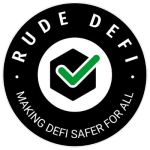Decentralized Finance (DeFi) has emerged as a revolutionary force, reshaping the financial landscape and democratizing access to financial services worldwide. As the DeFi ecosystem continues to evolve at a rapid pace, it’s crucial to analyze current trends, emerging innovations, scalability solutions, and predictions for the future. In this blog post, we’ll dive into the dynamic world of DeFi and explore what lies ahead for decentralized finance.
Current Trends in DeFi
- Liquidity Mining and Yield Farming: Liquidity mining and yield farming have become ubiquitous in the DeFi space, with users providing liquidity to decentralized exchanges (DEXs) and lending protocols in exchange for rewards, governance tokens, and yield optimization strategies.
- Decentralized Exchanges (DEXs): DEXs have experienced tremendous growth, challenging their centralized counterparts by offering lower fees, greater privacy, and enhanced security. Platforms like Uniswap, SushiSwap, and Curve Finance have become instrumental in facilitating peer-to-peer trading of cryptocurrencies.
- Derivatives and Options Trading: DeFi platforms are increasingly offering decentralized derivatives and options trading, allowing users to hedge risks, speculate on price movements, and access sophisticated financial products in a permissionless manner.
- Non-Fungible Tokens (NFTs): NFTs have gained popularity in the DeFi space, enabling the tokenization of digital assets, art, collectibles, and gaming items. Platforms like Rarible, OpenSea, and Axie Infinity are leading the charge in the NFT market.
- Cross-Chain Interoperability: Interoperability solutions are gaining traction, allowing seamless asset transfers and communication between different blockchain networks. Projects like Polkadot, Cosmos, and Chainlink are pioneering efforts to achieve cross-chain interoperability.
Emerging Innovations in DeFi
- Decentralized Identity: DeFi projects are exploring decentralized identity solutions to enhance user privacy, security, and control over personal data. Self-sovereign identity platforms like uPort and Sovrin aim to empower users with full ownership of their digital identities.
- Decentralized Autonomous Organizations (DAOs): DAOs are gaining momentum as self-governing entities that operate according to predefined rules encoded in smart contracts. DAO frameworks like Aragon and DAOstack enable decentralized decision-making, voting, and governance.
- Layer 2 Scaling Solutions: Layer 2 scaling solutions such as optimistic rollups, zk-rollups, and state channels are being developed to address scalability challenges on blockchain networks. These solutions aim to increase transaction throughput, reduce fees, and improve the user experience for DeFi applications.
- Decentralized Finance Infrastructure: Infrastructure projects focusing on security, interoperability, and developer tools are emerging to support the growth of DeFi. Projects like Chainlink, The Graph, and Compound are providing essential infrastructure for decentralized finance applications.
Scalability Solutions for DeFi
Scalability remains a critical challenge for DeFi, as blockchain networks struggle to handle increasing transaction volumes and congestion. To address scalability issues, various solutions are being explored, including:
- Layer 2 Scaling: Layer 2 scaling solutions, such as rollups and sidechains, aim to increase transaction throughput by processing transactions off-chain and settling them on the main blockchain periodically.
- Sharding: Sharding involves partitioning the blockchain network into smaller shards, each capable of processing transactions independently, thereby increasing network capacity and scalability.
- Ethereum 2.0: Ethereum 2.0, also known as Eth2 or Serenity, is a major upgrade to the Ethereum network that aims to improve scalability, security, and sustainability through the introduction of proof-of-stake (PoS) consensus and shard chains.
- Cross-Chain Bridges: Cross-chain bridges enable interoperability between different blockchain networks, allowing assets to be transferred seamlessly across multiple chains and improving overall scalability and flexibility.
Future Outlook for DeFi
The future of DeFi is filled with promise and potential, as the ecosystem continues to expand, innovate, and mature. Some key predictions for the future of decentralized finance include:
- Mainstream Adoption: DeFi will continue to gain mainstream adoption, attracting institutional investors, traditional financial institutions, and retail users seeking alternative financial services and investment opportunities.
- Regulatory Evolution: Regulators will play an increasingly active role in shaping the regulatory landscape for DeFi, with initiatives focusing on investor protection, market integrity, and compliance with anti-money laundering (AML) and know-your-customer (KYC) regulations.
- Innovation and Experimentation: DeFi will remain a hotbed of innovation and experimentation, with new protocols, products, and applications pushing the boundaries of what’s possible in decentralized finance.
- Cross-Chain Interoperability: Cross-chain interoperability will become a key focus area, enabling seamless asset transfers and communication between different blockchain networks and fostering greater collaboration and connectivity within the DeFi ecosystem.
The future of DeFi is bright and full of promise, with innovation, scalability, and interoperability at the forefront of the industry’s evolution. By staying abreast of current trends, embracing emerging innovations, and addressing scalability challenges, the DeFi community can continue to drive the adoption and maturation of decentralized finance, shaping the future of finance for generations to come.







